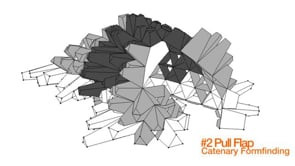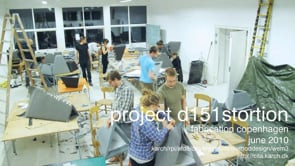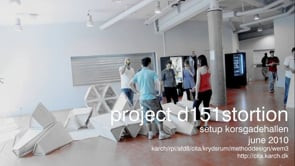
Project Distortion (2010)

A teaching-based research collaboration between CITA, Department 8 at the Royal Danish Academy of Fine Arts, School of Architecture, Copenhagen and the Rensselaer Polytechnic Institute, New York.
The Distortion pavilion is an installation designed exclusively for the Copenhagen Distortion festival. The sensational pavilion mixes light, sound, space and infinitely altered reflections into a fantastical reality.
The digitally fabricated, reconfigurable, mobile pavilion is made up of over 151 individually tuned sound and light cones cut from acoustic absorbing material. Focusing on acoustic and visual performance and its interaction with the inhabitant—recombinatory geometries, parametric design strategies and physics-based simulation techniques give architectural expression to the Dionysian experience of the City Music Festival. Splashing curious fragments of light onto the ground and its surroundings, the mobile installation visited four music venues during the festival taking center stage outdoors, in a small nightclub, on the street and in a crowded lobby. During the all-night parties, visitors could inhabit the structure that revealed a kaleidoscopic golden surface reflecting movement, light, sound and colour.
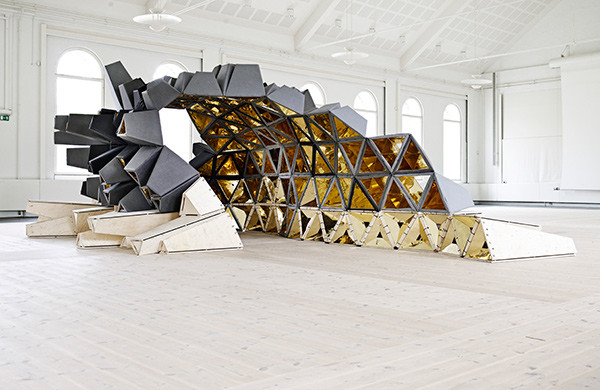
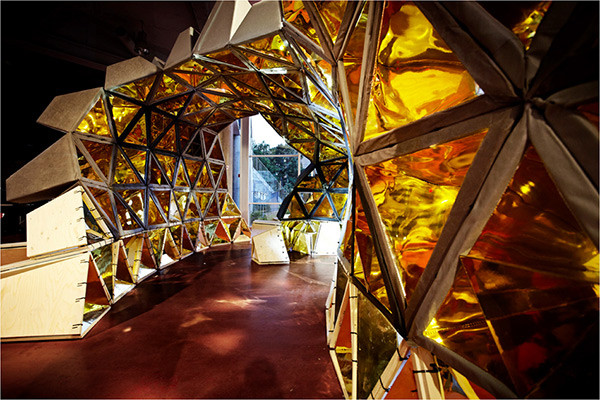
Project Distortion focuses on several key areas: performance-driven design, digital design tools and digital fabrication. The result of the project is the fabrication and installation of a 1:1 structure. The project is part of a wider research agenda into how to design when analysis, design and fabrication are tightly interwoven.

The pavillions structure is based on the behaviour of textiles. Here shape is generated within a defined matrix through folding and crumbling. This allows for the textile to adopt to different situations. The distortion project makes use of this as this allows the adoption to the festivals different sites. yet the fabrication of the pavillion needed precise data. Therfor the team used a physics engine to simulate the behavior of the structures underlying hinged equilateral triangles. A digital environment was created where the influence of gravity and the textiles crumbling can be directly obserevd in the design process. this was driven by parameters of space, accoustic performance and social interaction. The resulting digital geometrical definition was used to control the digital fabrication process.
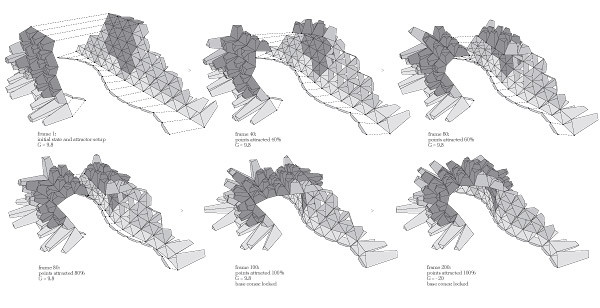
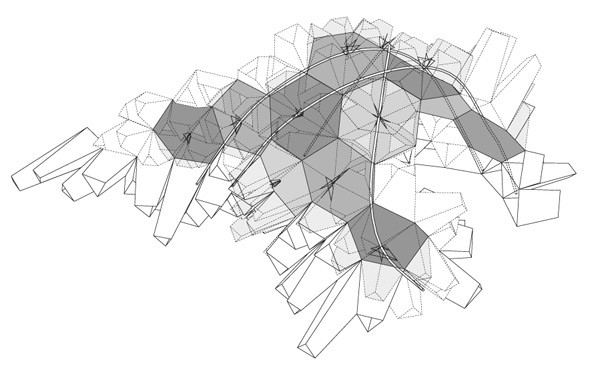
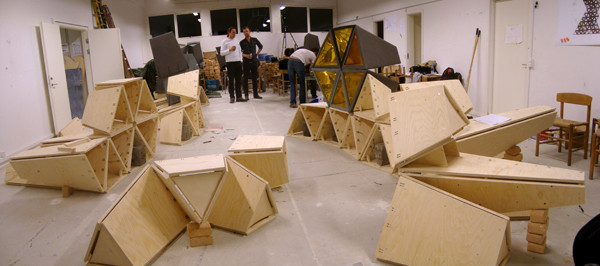
Like the multiple urban sites occupied by the festival, Project Distortion exists in a binary state of material and experiential expression, its internal contradictions challenging our ideas of space and social interaction. It simultaneously evokes notions of movement and repose, a sense of being proximate and isolated, of watching and being watched. Playing on this series of oppositions through tactility, light, and sound—it layers intimacy with exposure, dark with light, noise with quiet and amplifies the extremes of each as one’s orientation to the installation shifts. Aggregations of the soft cones form dark nooks of dampened sound that open up to a vault of fractal reflections of exploding color and music from the festival.
The project is a international collaboration between students from the Architecture, Experiment and Technology master course at Department 8, Royal School of Architecture led by Niels Andersen and Ali Tabatabai and CITA (the Centre for IT and Architecture) at the Royal Academy of Fine Arts School of Architecture, and Rensaeller Polytechnic Institute (RPI) in New York.
The design development took place as a collaboration between researchers, teachers and students. The students were either in pursuit of their professional degrees, as a part of specialized master’s programmes in acoustic and lighting design, or alongside their phd. thesis. Design explorations and presentations results were tracked and shared through a host of contemporary media platforms throughout the four month development phase which culminated in the conjoint realization of the final installation.
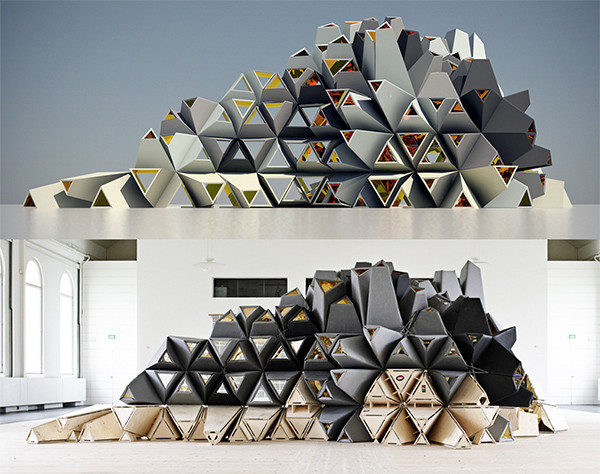
Project Distortion was exhibited during the Copenhagen Distortion Festival at Pumpehuset (Wednesday June 2nd), Korsgadehallen (Thursday 3rd June), Enghave Plads (Friday 4th June), Carlsberg (Saturday 5th June).
The studio furthermore included a highly motivated group of international students from respectively Department 8 at Karch, Copenhagen and from the Rensselaer Polytechnic Institute, New York, all on Master or PhD levels with background in light- and acoustic- and architectural design.
Support
Statens Kunstfond
Akustikmiljø, Sweden - producer of the Fibrefloat Accoustic panels
The Royal Academy of Fine Arts School of Architecture
Publication
Sofia Eriksson, Sofia (2012) "Arkitektur + Akustik" - online article.












